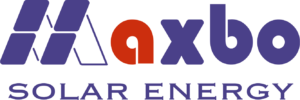As the world continues to shift towards renewable energy sources, solar power has emerged as a leading contender. Solar photovoltaic (PV) systems, in particular, have gained popularity due to their ability to convert sunlight into electricity. However, before making the switch to solar, it’s important to understand the cost implications. Here are five key facts you need to know about solar PV cost:
1. Initial Investment
Installing a solar PV system requires an initial investment, which includes the cost of solar panels, inverters, mounting equipment, and installation labor. The size of the system and the quality of the components can significantly impact the upfront cost. On average, a residential solar PV system can range from $10,000 to $30,000, depending on the location and energy needs.
2. Long-Term Savings
While the initial investment may seem substantial, solar PV systems offer long-term savings. By generating your own electricity, you can reduce or even eliminate your monthly utility bills. Over time, the savings can offset the initial cost, resulting in significant financial benefits. On average, homeowners can save between 40% and 70% on their electricity bills over the lifespan of a solar PV system.
3. Return on Investment
The return on investment (ROI) for solar PV systems is typically favorable. The payback period, which is the time it takes to recoup the initial investment through energy savings, can vary depending on factors such as location, electricity rates, and available incentives. On average, residential solar PV systems have a payback period of 5 to 10 years. After that, the system continues to generate savings for the remainder of its 25 to 30-year lifespan.
4. Government Incentives
Government incentives can significantly reduce the cost of installing a solar PV system. Many countries and states offer tax credits, grants, rebates, and other financial incentives to encourage the adoption of renewable energy. These incentives can help offset the initial investment and shorten the payback period. It’s important to research and take advantage of the available incentives in your area to maximize the cost savings.
5. Maintenance and Lifespan
Solar PV systems require minimal maintenance, which helps keep the long-term costs low. The panels should be cleaned periodically to remove dirt and debris that can reduce their efficiency. Additionally, the inverter may need to be replaced after 10 to 15 years. However, overall, solar PV systems have a long lifespan of 25 to 30 years, making them a reliable and cost-effective investment.
By understanding these five facts about solar PV cost, you can make an informed decision about whether solar power is the right choice for you. While the initial investment may seem daunting, the long-term savings, favorable ROI, and available incentives make solar PV systems a financially viable option for many homeowners.








